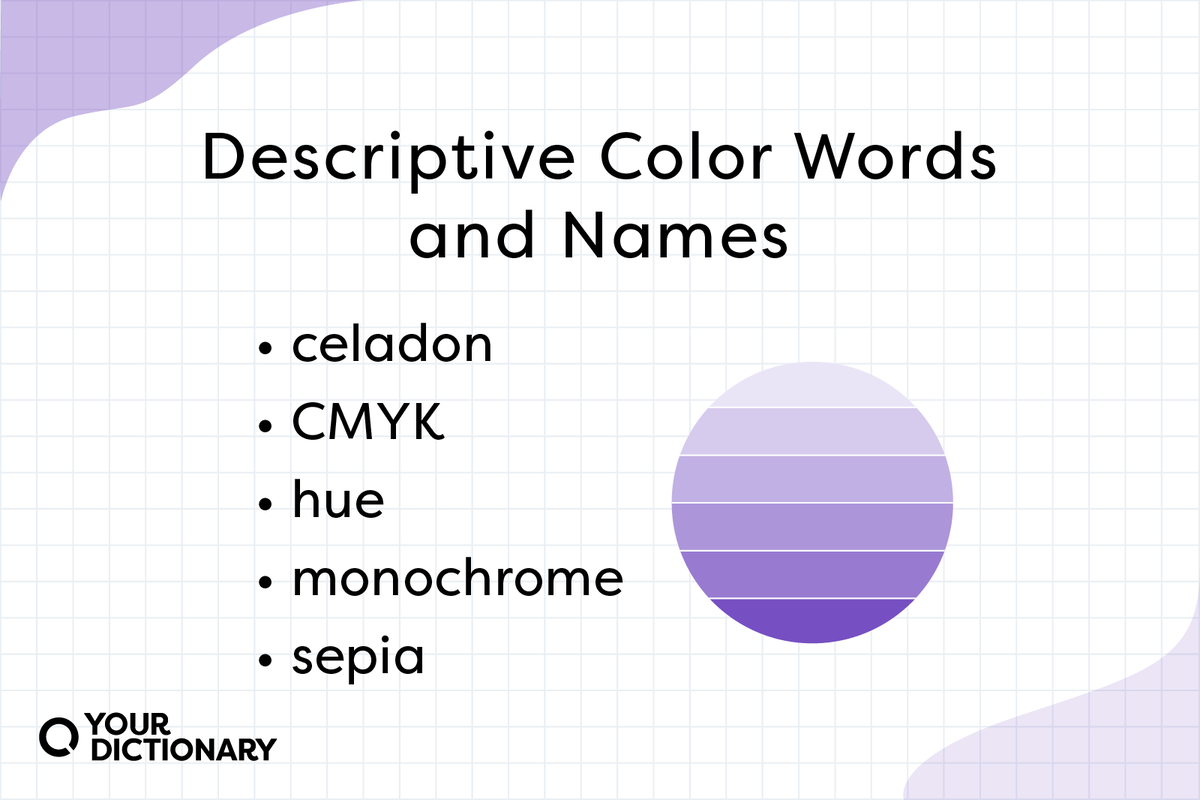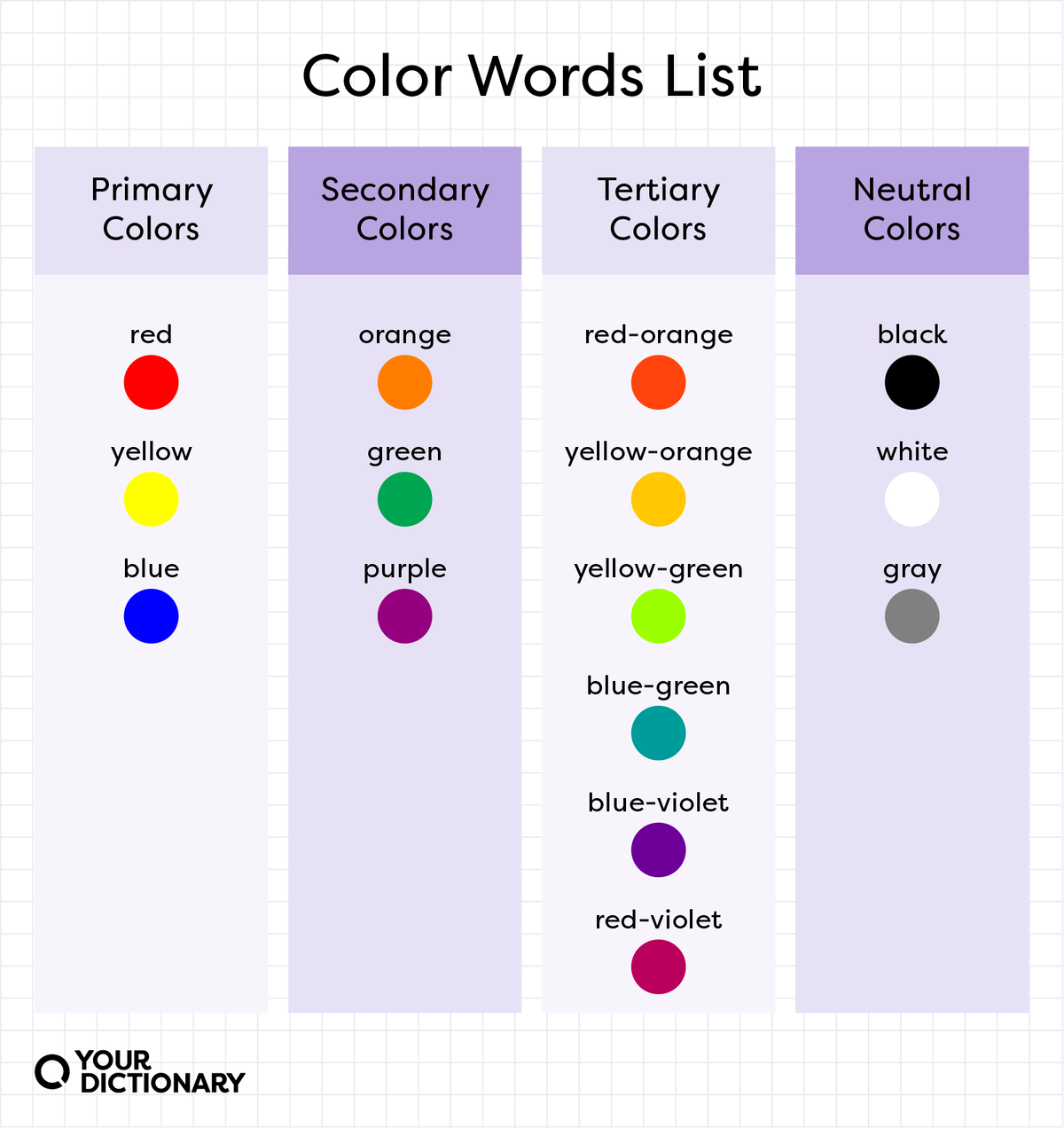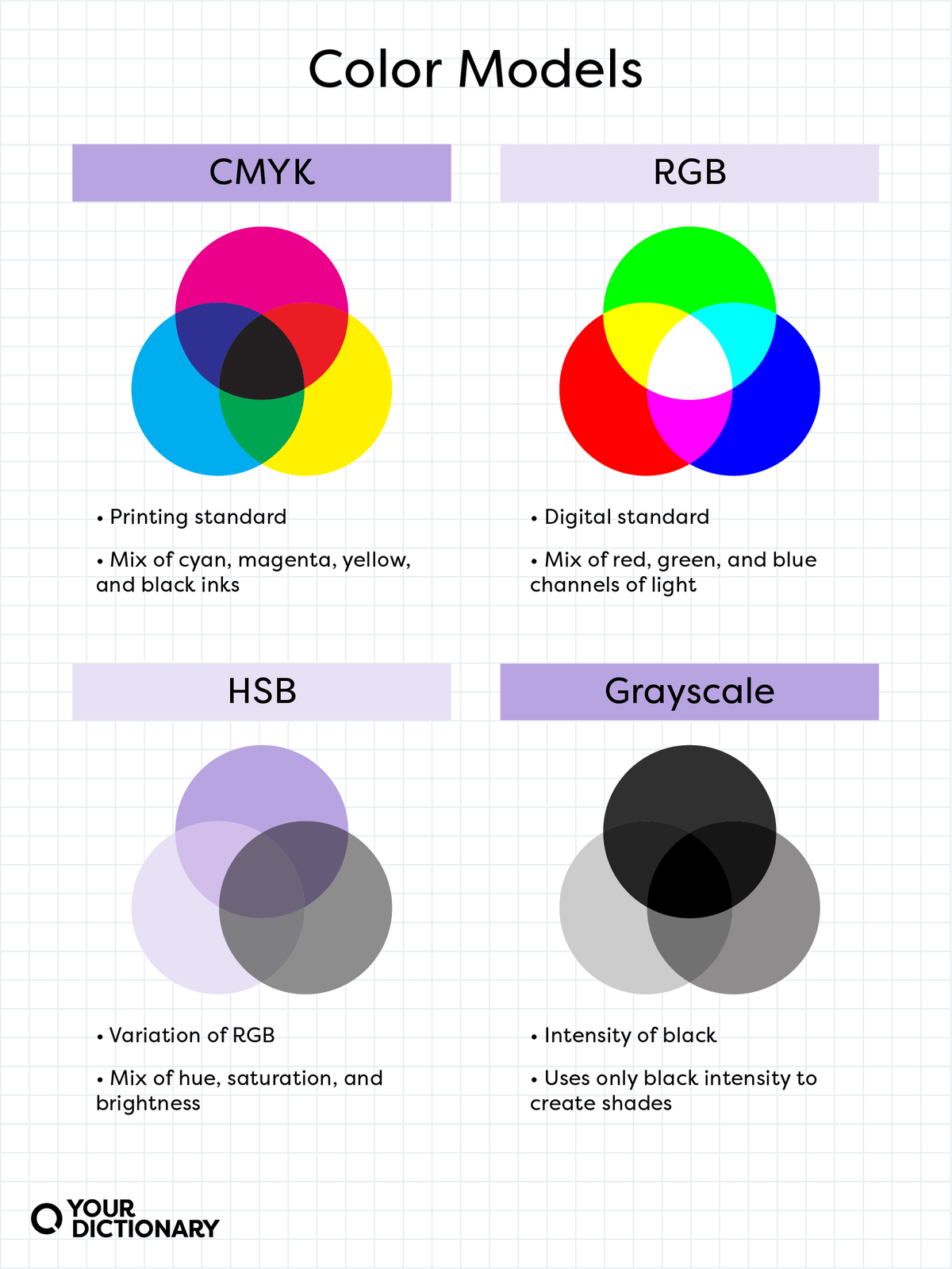
The most basic words about color fall into the primary, secondary and tertiary color categories. Once you've learned those words, you can move onto color properties, models, and variations for a full, colorful vocabulary.
Primary Color List
Primary colors are the basic colors that can be mixed together to form all of the other colors. There are three primary colors:
- red
- yellow
- blue
Secondary Color List
Secondary colors are the ones that are created when two secondary colors are mixed with each other. There are three secondary colors:
- orange (a mixture of yellow and red)
- green (a mixture of yellow and blue)
- violet/purple (a mixture of blue and red)
Tertiary Color List
The tertiary colors are created by combining equivalent parts of a primary color and a secondary color. There are six tertiary colors:
- red-orange
- yellow-orange
- yellow-green
- blue-green
- blue-violet
- red-violet
Neutral Color List
There are three neutral colors:
- black
- white
- gray
Color Words Chart
Never forget the colors that fall into primary, secondary, tertiary, and neutral color categories with this printable color chart for the classroom or home.

15 More Beautiful Color Names
Of course, there are many lovely and unique colors beyond the most basic primary, secondary, tertiary, and neutral colors, made possible through unique variations. Some of the most interesting and unique colors are described by words that are beautiful in their own right.
- alabaster - an almost translucent shade of white color
- amber - richly beautiful color between brown and yellow
- azure - a radiant, bright blue
- celadon - an elegant, pastel green
- cerise - deep, bright and vibrant pink
- cerulean - a beautiful shade of light blue
- chartreuse - a muted, greenish-yellow color
- claret - a deep, rich, dark red
- ecru - a beige shade with just a tiny tinge of brown
- mauve - a pale purple with a hint of pinkish undertone
- parchment - off-white shade with a slightly yellowish tinge
- saffron - a brilliant yellow shade with a hint of orange
- sepia - a reddish-brown color
- turquoise - a greenish-blue color
- vermilion - a deep scarlet red
Color Properties
There are a number of different color properties.
- warm - red, orange, yellow, and their variations
- cool - blue, green, violet (purple), and their variations
- saturation - the degree of intensity of a color
- saturated - very intense color
- desaturated - dulled color; not intense
- bright - high light intensity
- dark - low light intensity
- monochrome - a single color, including variations
Color Variations
Of course, there are many color variations beyond primary, secondary, tertiary, and neutral colors.
Variations are determined based on combining the most basic types of colors to form new types.
- hue - pure color, with no neutral tones added (The primary, secondary and tertiary colors are hues.)
- shade - add black to a color to darken it (Brown is a shade created by combining orange and black or red, yellow and black.)
- tint - adding white to lighten it (Pink is a tint of red; light blue is a tint of darker blue.)
- tone - adding gray to reduce its intensity (Gray is used to reduce the intensity of any color. This is referred to as "toning down" a color.)
Color Models/Codes
Color models are also referred to as color codes or color spaces. These acronyms are used to describe specifics of a precise color.
A color model can specify how basic or neutral colors are combined to make specific variations or to refer to other characteristics of color. Examples include:
- CMYK - The CMYK color represents a combination of cyan, magenta, yellow, and black (The "k" stands for black because "b" represents blue.)
- RGB - The RGB color model represents a combination of red, green and blue.
- HSB - The HSB color model is a variation of RGB, that refers to the specific hue, saturation and brightness of colors.
- grayscale - The term grayscale refers to the range of neutral colors (white, gray and black) present in a black and white visual.

Creative Ways to Describe Color
Of course, beyond looking at words specific to color (or is it colour?) itself, it's often important to describe the appearance of color, such as how beautiful (or not) a color is and what meaning it may convey.
For ideas on descriptive terminology, explore this list of words to describe color. To put your new knowledge of words to practical use, expand your horizons even further by exploring some descriptive words to critique art.